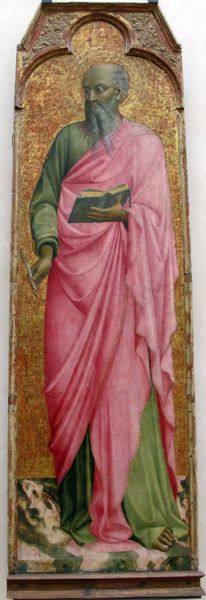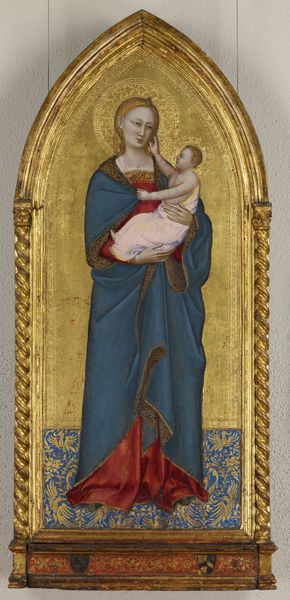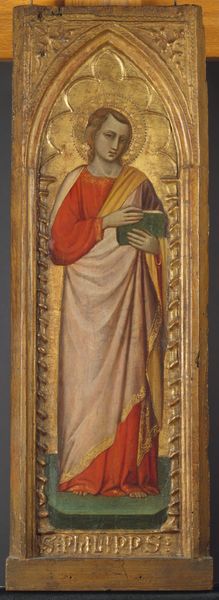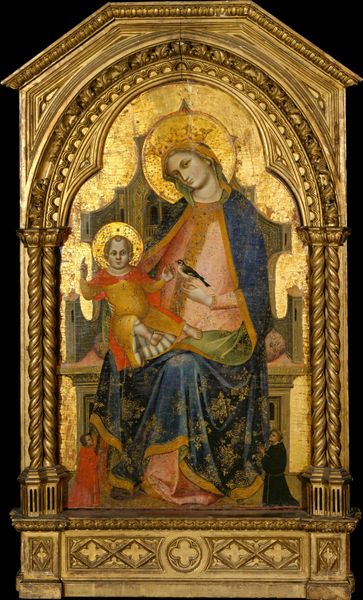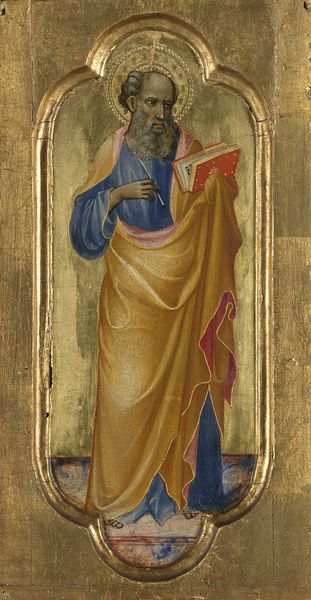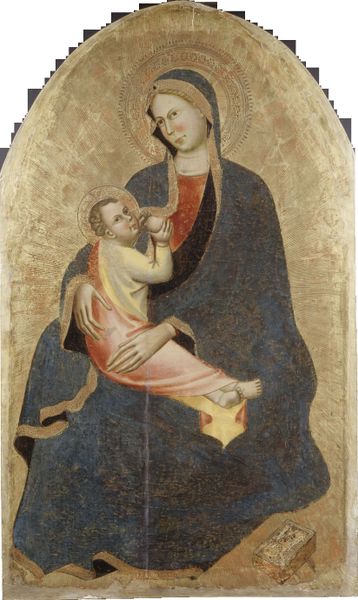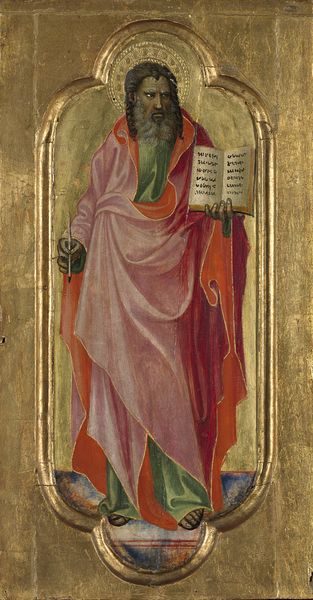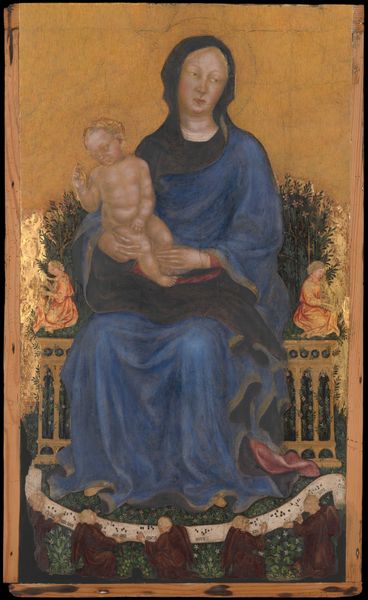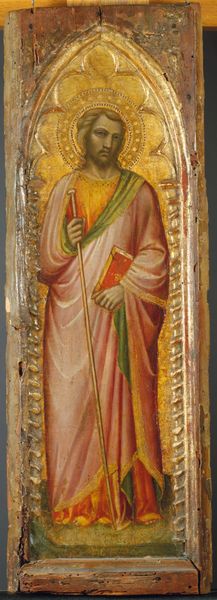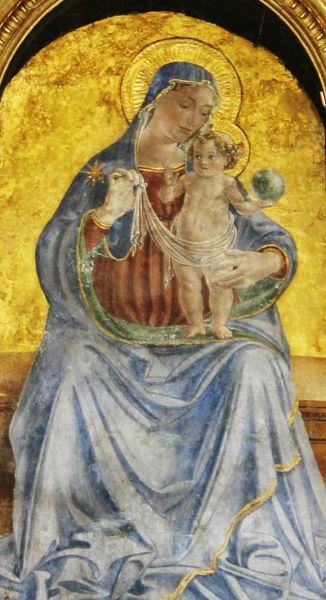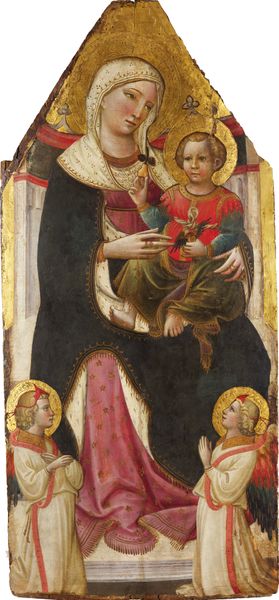
tempera, painting, wood
#
portrait
#
medieval
#
tempera
#
painting
#
figuration
#
oil painting
#
wood
#
history-painting
#
international-gothic
#
portrait art
Dimensions: 155 cm (height) x 48 cm (width) (Netto), 177 cm (height) x 63 cm (width) x 9.5 cm (depth) (Brutto)
Mesteren for Palazzo Venezia Madonna created this panel painting of St. Corona in Italy during the 14th century. Corona, whose name relates to crowns and royalty, is seen here holding a palm frond signifying martyrdom. The image of St. Corona reflects the religious and social structures of medieval Italy. The Catholic Church played a central role in everyday life and largely shaped artistic production. The Church commissioned works like this to inspire faith and instruct the public, but what did it mean for an institution to be a patron? And what influence did patrons have? Scholars consult hagiographies, historical documents that recount the lives and miracles of saints. These resources help us understand how the stories of figures like St. Corona were used to reinforce certain values and beliefs. After all, art is not just about aesthetics. It's deeply intertwined with the social, cultural, and institutional contexts in which it's made and viewed.
Comments
statensmuseumforkunst almost 2 years ago
⋮
Legend says that in a vision the 16-year old St. Corona saw an angel descend from the heavens bearing two crowns: a modest one for herself and a more precious version for St. Vittorio, with whom she was to suffer martyrdom for her Christian faith.The depiction of the two saintsThe Master of the Palazzo Venezia Madonna depicted her wearing the small crown while elegantly supporting the large crown with the fingertips of her left hand. Like St. Vittorio, she carries a pair of palm branches - the trophy of martyrdom - in her right hand. St. Vittorio also holds an olive branch, the symbol of Siena’s victory over Montepulciano and Orvieto in 1229 on what was later called St. Vittorio’s Day.Examples of Siena GothicThe panels were originally side panels flanking a main panel depicting the adoration of the shepherds painted by Bartolomeo Bulgarini (1300/1310-1378). They are very rare and fine examples of Siena Gothic with its unique linear and colourful decorative style; a contrast to the rival Florentine school which puts greater emphasis on mass and gravity.A grandiose decoration projectThe altarpiece was created in or immediately after the plague year of 1348, which severely decimated the population of Siena. The St. Vittorio altarpiece marked the completion of a grandiose decoration project in the city’s cathedral; a project which also encompassed the altarpiece of which Ambrogio Lorenzetti’s (before 1317 - c. 1384) St. John the Baptist was part. Highlights 2005, Eva de la Fuente Pedersen.
Join the conversation
Join millions of artists and users on Artera today and experience the ultimate creative platform.
